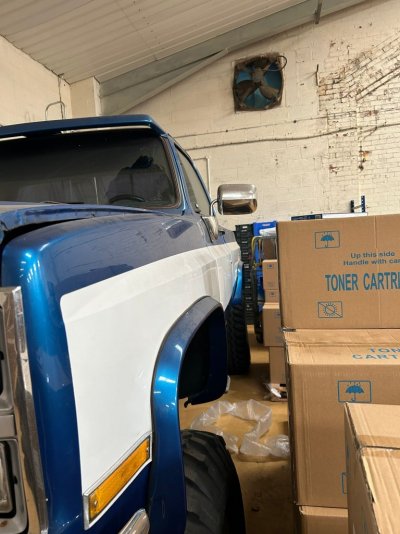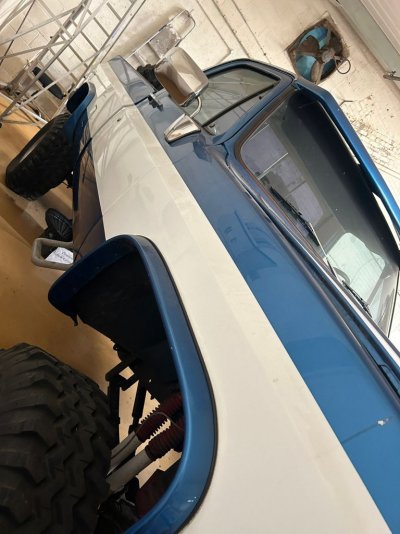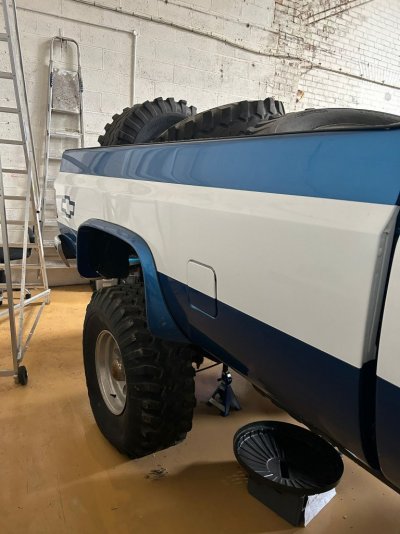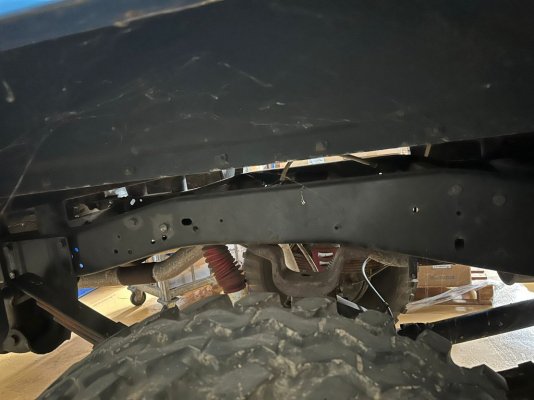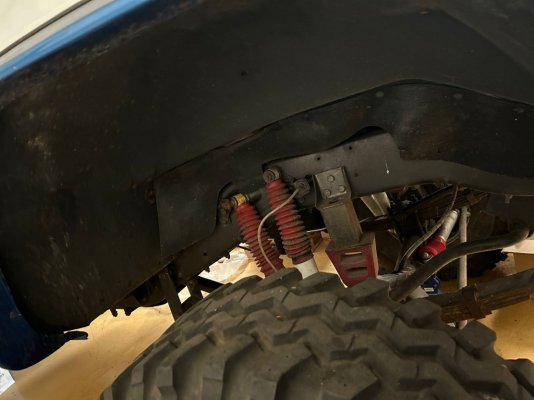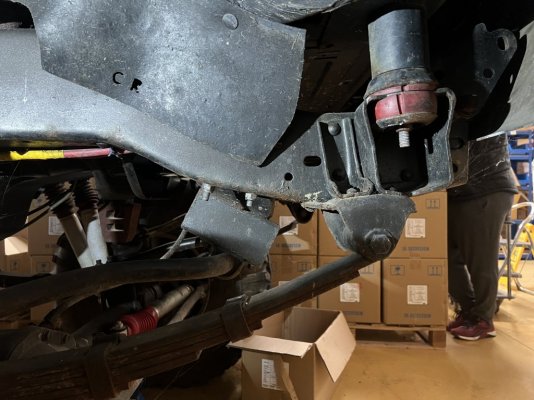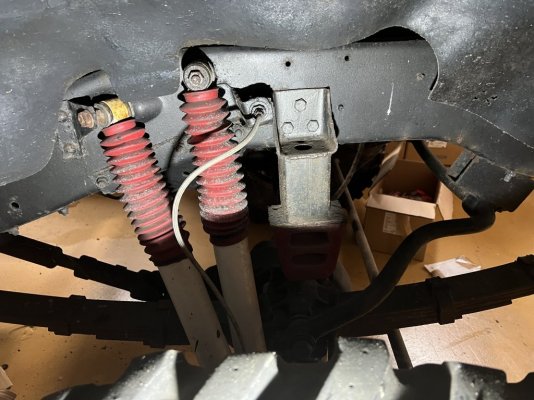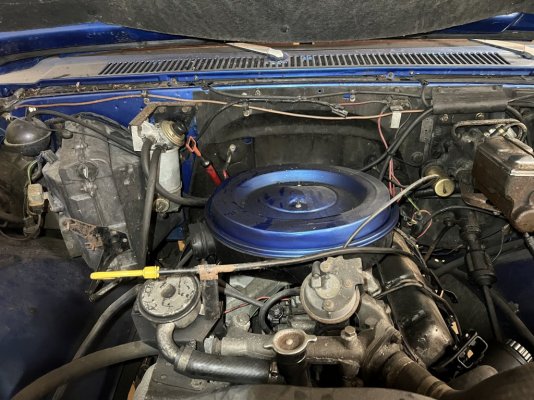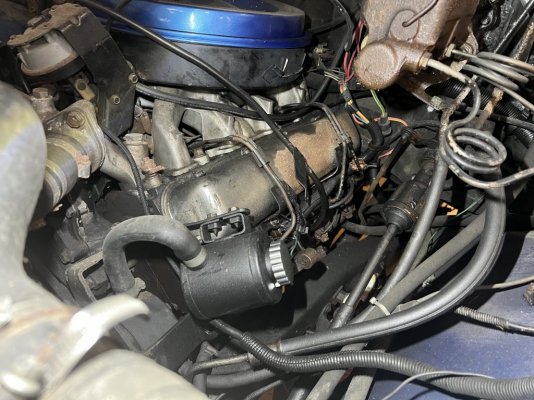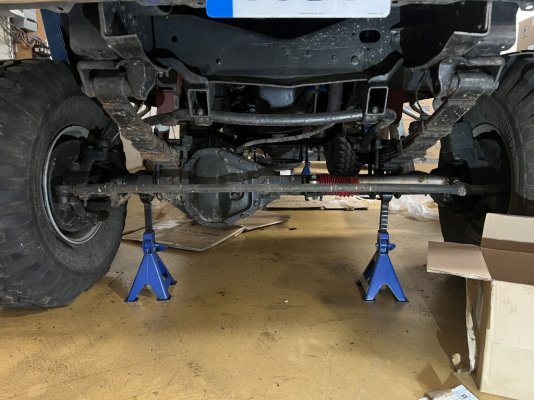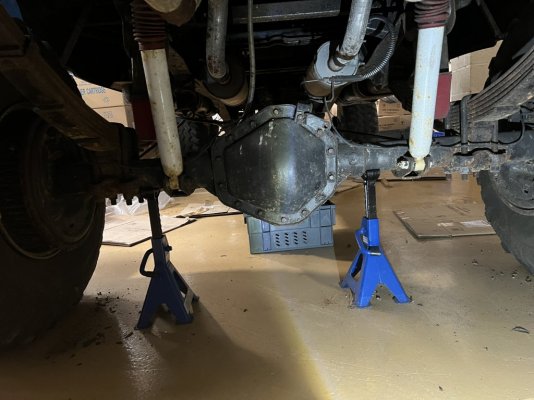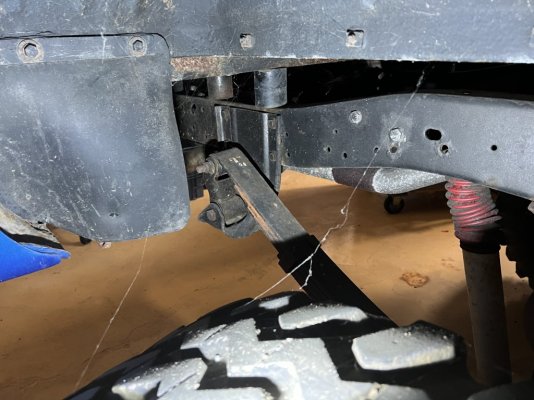This might be a good time to describe how the VINs were stamped in the factory. As I mentioned, I (briefly) ran the area on the Chassis Line - I think as a summer student.
The VIN stamper is a large hydraulic "press" hanging from a tool rail and with the weight offset by a "balancer" (imagine a Harley-Davidson hanging from the ceiling that you are supposed to maneuver into position and press a button). The fixture has a little "hook" so you can grab under that top flange of the frame rail and then the hydraulics "press" the letters into the steel.
It is supposed to index to the next digit automatically -but - if you mis hit or get out of sequence for some reason then you have to make a repair. Chevy and GMC can have different VIN sequence numbers, requiring different stampers hanging there, so if the operator stamps a Chevy VIN on a GMC, for example, then not only is that particular truck wrong but you are out of sequence on every truck after that.
The assembly line repair person and/or the "quality man" (the foreman's right hand man) follow the vehicles down the line with an "X" stamp and a 5 lb hammer and correct the VIN sequence number as required.
Usually it's not just one truck. It normally takes several trucks before somebody notices, so you'll have five or six trucks that have to be fixed - all without the line stopping - so it's quite a scramble for a few minutes while you figure out what went wrong and what has to happen to make it right. You pray nothing else goes to crap while you've got your two best guys otherwise unavailable.
It is a Federal requirement that the VIN is correct, and we put a lot of effort into making sure that was the case. A few years ago I would have sworn that none got out but I have seen so many in the hobby now that obviously that is not the case.
I'm a "never say never" kind of guy but I share this to demonstrate how, by knowing the process, one can determine that putting the VIN on the side of the rail is very, very unlikely (at least in Flint).
K


